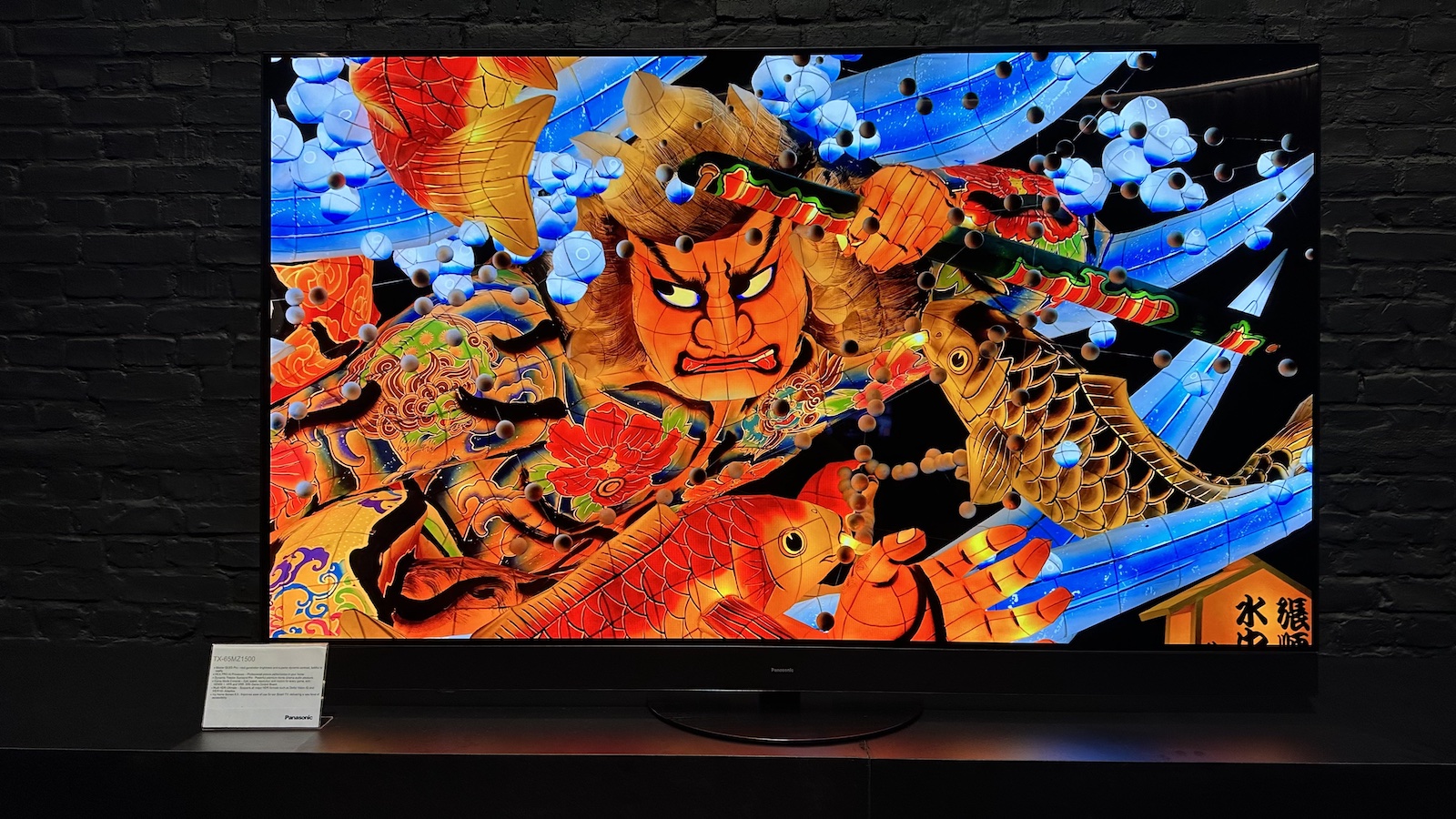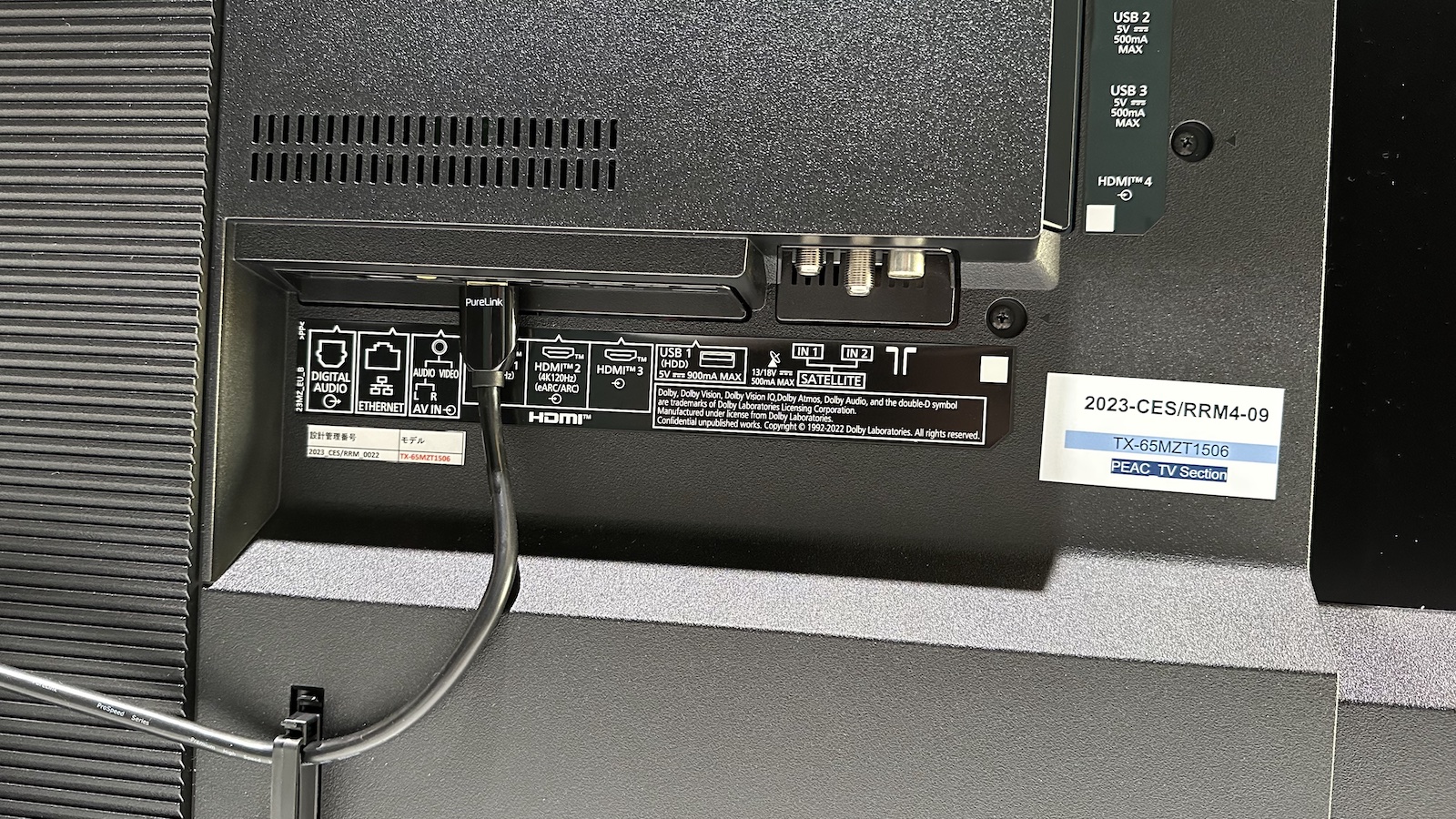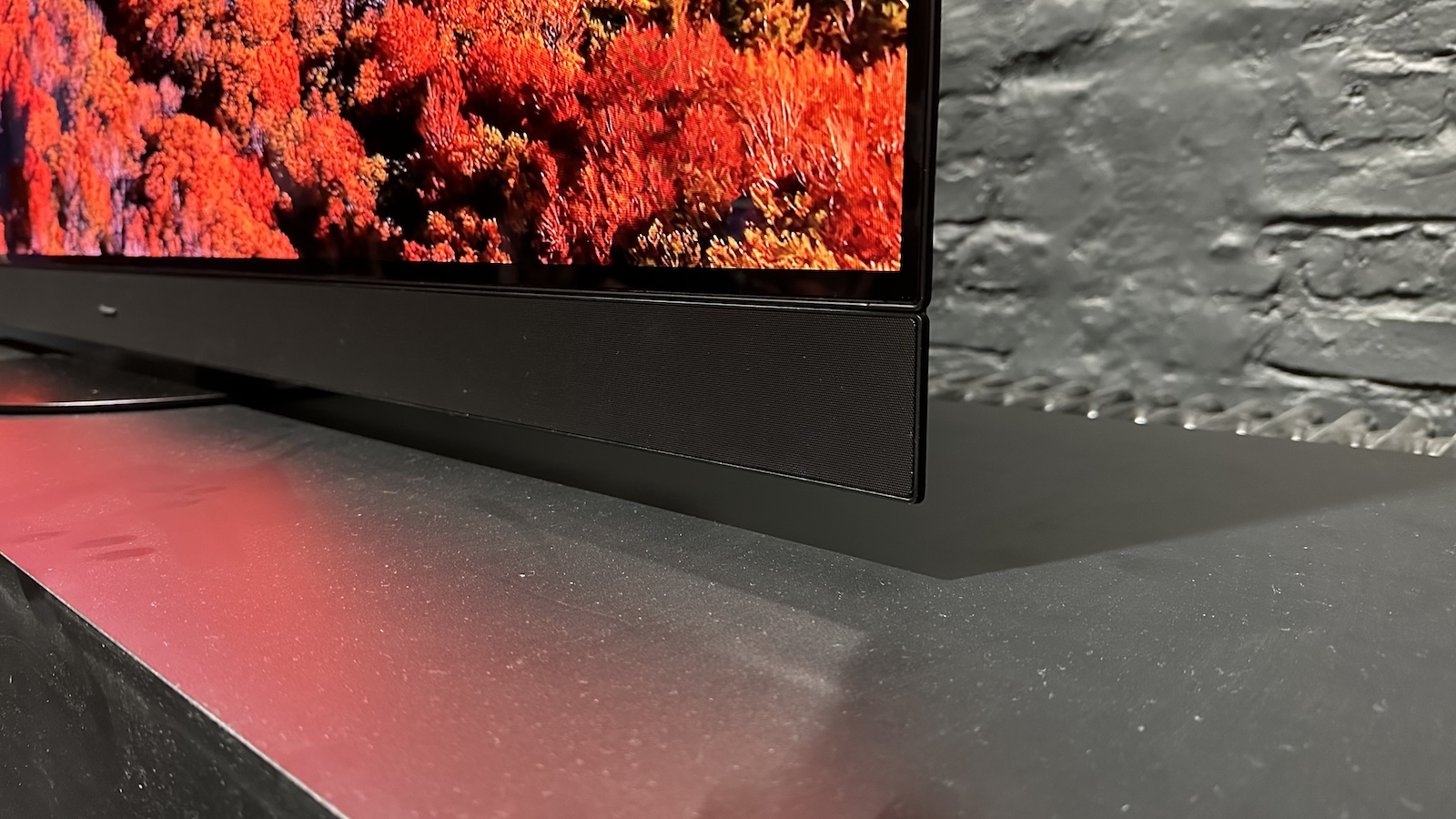
As is the norm for the company, Panasonic announced its flagship TV for 2023 at CES way back in January, and has only now taken the wraps off the rest of its new range.
There are lots of highlights, including an entry-level OLED that runs the Android TV operating system and a slightly dubious association with the new Diablo 4 game, all of which you can read about in our Panasonic 2023 TV lineup explainer. And you can read more about the flagship OLED model in our MZ2000 hands-on. Today, though, we’re focused on the step-down OLED TV in the new range – the MZ1500.
The 1500-series model is always a popular one because it typically features Panasonic’s top picture tech without such a bulky, price-increasing sound system. Unfortunately, there’s been a slight change in approach this year, and the MZ1500 doesn’t feature the new MLA technology that the MZ2000 has. How much of a problem is that? We’ll have to wait until we get the TV into our test rooms before we deliver a full verdict, but we got a good idea of its strengths and weaknesses in a recent hands-on session.
Pricing and availability
While still somewhat subject to change, we’re told that the Panasonic MZ1500 will launch in August at a price of £2200 (around $2800 / AU$4100) for the 55-inch model and £2900 (around $3700 / AU$5400) for the 65-inch version. There will be 48-inch and 42-inch variants in some regions, but these aren’t expected in the UK. These smaller models don’t go as bright as the larger ones and don’t have the under-screen speaker bar, so they appear to be very similar to the 48- and 42-inch versions of the MZ980, which are coming to the UK.
Upgrading to the MZ2000 will cost you £500 or £700 extra, depending on whether it’s the 55-inch for 65-inch model you’re going for. Doing so will get you the brightness-boosting MLA panel technology and additional side- and up-firing speakers.
In terms of rivals, the most obvious one is the LG C3, which launched at £2100 / $1900 / AU$3299 for 55 inches and £2900 / $2600 / AU$4299 for 65 inches but has already seen some discounting.
While it can be hard to get specifics out of some manufacturers, we understand that both the Panasonic MZ1500 and LG C3 use the same OLED EX panel from LG Display. However, the MZ1500 has a heatsink while the C3 does not. That will in theory allow the Panasonic model to go brighter. It also has a distinct, front-firing speaker array while the C3 has hidden drivers that unfortunately don’t sound very good.
Features

Picture performance is about far more than just the panel hardware that’s used. If that wasn’t true, every OLED TV that used LG Display’s latest panel (that's most OLED TVs from the last few years) would perform identically, and that’s certainly not the case. Processing plays a huge part, and Panasonic has a new HCX Pro AI processor that features in the MZ2000, MZ1500 and MZ980 OLEDs.
Panasonic has always majored in picture authenticity, designing its TVs to deliver on a movie’s creative intent, and this new processor brings with it an improved version of Filmmaker Mode that adapts to the ambient lighting in a room. The idea is that whether the lights are on or the warm sun is blazing through the window, you’ll see the picture as intended.
Panasonic is also very keen to leverage this picture authenticity for gaming, and so models that feature the HCX Pro AI processor also get a True Game Mode that is designed to deliver games with precisely the right colour balance and contrast. This mode can be further calibrated through Calman, should you want to go the extra mile, and there’s source-oriented HDR tone mapping that should work in the way that the HGiG setting does on an LG TV and result in more accurate HDR for lots of games.
Unfortunately, it’s not all good news on the gaming front, as there are still just two HDMI 2.1 sockets, one of which is also the eARC port so may well be needed for a soundbar or AV receiver. Those HDMI 2.1 sockets can handle all of the major gaming formats, including 4K/120Hz, VRR (in both FreeSync and G-Sync) and ALLM. Dolby Vision gaming is also supported, but only up to 4K/60Hz – something for Xbox Series X owners to consider.
While Panasonic is experimenting with other operating systems for some models this year, its top OLEDs, including the MZ1500, feature the new 8.0 version of the company’s own My Home Screen OS. Other than new accessibility features, this seems to be very similar to last year’s iteration, which we found to be simplistic but intuitive and responsive. We’re hoping the app selection is enhanced a bit – we consider the full-fat Apple TV app to be pretty essential on account of its superb library of pay-as-you-go HDR movies (My Home Screen 7.0 only had an Apple TV+ app for streaming Apple’s own content), and apps for BT Sport and Now would be nice.
Picture

Much of the focus of Panasonic’s recent launch event was on the MZ2000, but we did get a brief look at the MZ1500 in action, and the omens are good. No, it doesn't have the MLA tech of the MZ2000, and that’s both a great shame and obvious in action – there’s a very noticeable drop in brightness for the MZ1500, particularly in the Dynamic picture preset that both TVs were running in during the demo.
However, the MZ1500 looked plenty bright in its own right and a substantial step up on the MZ980. Remember, the MZ1500 has a heatsink that the MZ980 and rival sets such as the LG C3 do not.
The use of the Dynamic preset made it a little hard to judge exactly how successful Panasonic’s been in its quest for picture authenticity, but it was notable that the scenic demo footage looked natural but also punchy, razor-sharp and packed with detail.
In truth, the MZ1500 simply looked like a slightly less bright version of the MZ2000, though we will obviously need more time with both sets before we can deliver a full verdict on either.
Sound

It’s rare that hands-on events include an audio portion, and the one we got at the Panasonic launch demonstrated why. Technical issues that meant both the MZ1500 and LZ1500 next to it were playing simultaneously at times, less than ideal TV positioning and lots of background noise made it very hard indeed to get a sense of the relative merits of the new model.
All I could focus on at first was the MZ1500’s over-exaggerated bass which, it turns out, was only there because the Bass Boost setting was enabled for much of the demo. Other than that, all I could really tell was that the dedicated, forward-firing speaker bar of the MZ1500 sounded a bit more direct than the essentially invisible speaker system of the outgoing LZ1500.
Even more so than with the picture, this is an element of the TV’s performance that we won’t pass judgement on until we’ve got it into our dedicated test rooms for an extensive review.
Early verdict

While it’s undeniably disappointing that to get Panasonic’s best picture performance you also have to fork out for the MZ2000’s sound system, which you might not want, it would be a mistake to rule out the MZ1500.
This is a TV that’s priced very similarly to the LG C3 but that has a heatsink for potentially greater brightness and a soundbar-like speaker array for potentially better sound. While a hands-on session is never enough to reach any performance conclusions, the MZ1500 looks promising so far.
MORE:
Read our LG C3 review
And here's our Panasonic MZ2000 hands-on
These are the best TVs you can buy right now







